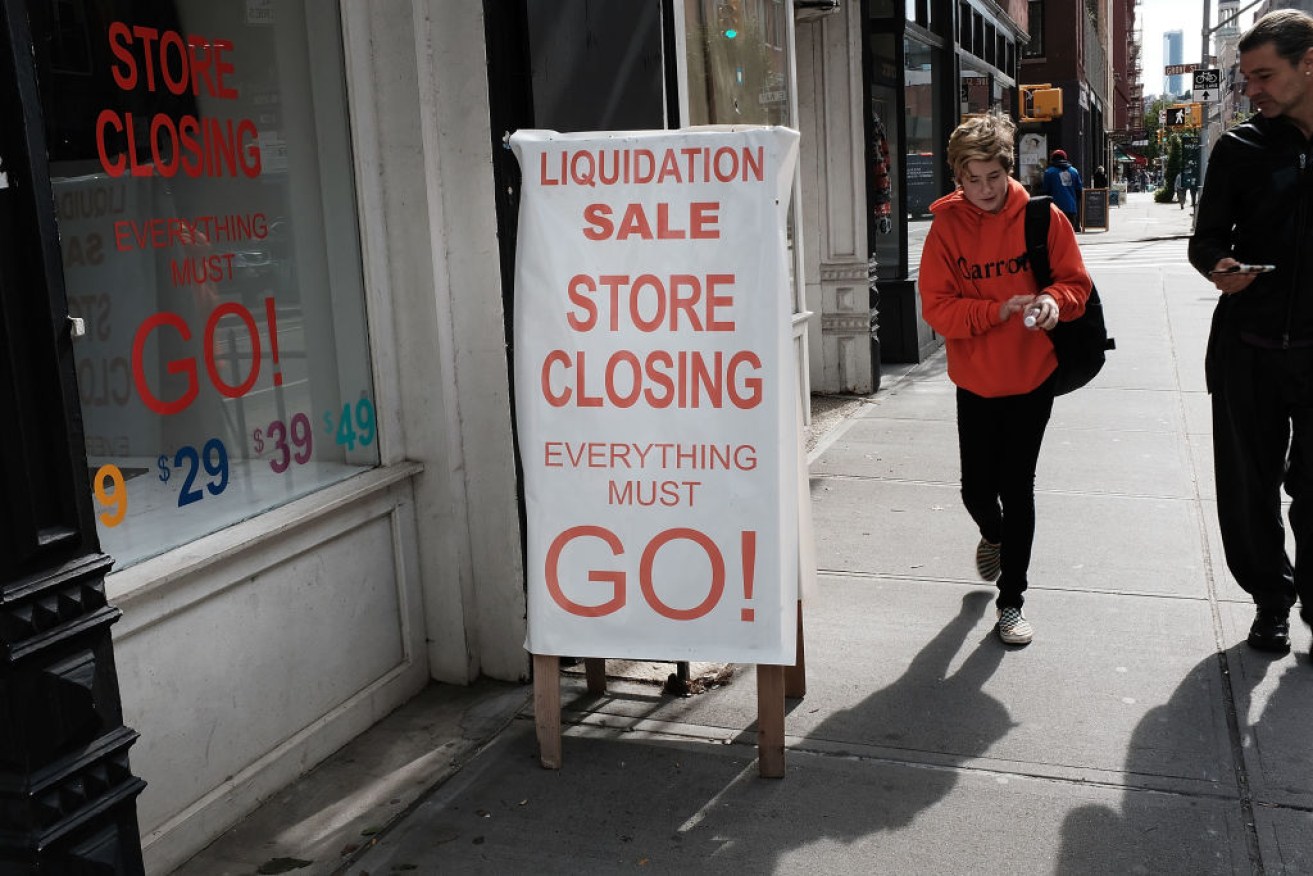The Reserve Bank: Either bad at maths or just out of touch


The national accounts showed household consumption retreated further in the December quarter. Photo: Getty
One of the admirable things about the Reserve Bank is that it admits its mistakes, putting its hand up when it’s wrong – unlike most of the private sector.
It was perhaps inadvertent that the minutes of this month’s RBA board meeting showed our central bank was seriously out of touch with the economy.
When it met on March 5, the board was of the opinion that “consumption was expected to have contributed more to growth in the December quarter than in the September quarter, when consumption growth had been soft”.
On March 6, the national accounts showed household consumption retreated further in the December quarter – up by just 0.4 per cent, with growth through the year dropping to just 2 per cent.
Consumption is crook.
The minutes claim some prescience in forecasting “a markedly slower pace of growth in the second half of 2018”.
GDP growth nearly halved in the September and December quarters combined, only growing by 0.5 per cent. Yet the RBA otherwise seems to have a better outlook than the actual figures.
“Information from liaison indicated that retail conditions had softened in December because some Christmas spending had been brought forward to November, but had remained stable since then,” the minutes recorded. That turned out to be airbrushing.
Yes, January figures published two days after the meeting showed retail sales growth had “stabilised” at a dud 0.1 per cent.
Crikey’s Glenn Dyer and Bernard Keane have more realistically charted the retail downturn since August.

The downtown is particularly sharp in the biggest state. New South Wales, accounting for 28 per cent of national retail sales, recorded annual retail sales growth of 0.6 per cent in the six months to January.
The RBA minutes say: “Survey measures of business conditions had ticked up to be slightly above average across most states and industries in early 2019.”
The NAB business conditions survey published a week later showed business conditions and confidence had fallen below average in February. Said NAB: “The decline in conditions was relatively broad-based in the month and continues a relatively sharp decline over the previous six months.”
The NAB economists also understandably put more weight on the February survey than the volatile New Year period and noted their survey’s leading indicators had turned negative. The forward orders index hit –2 and capacity utilisation “continued to trend lower and is now below average levels”.
It looks like the RBA doesn’t liaise with the same businesses that NAB surveys.
Then there’s the vital (and politically hot) area of wages growth, where the RBA seems determined to see the glass half-full despite being hopelessly over-optimistic in its forecasts for the past eight years.
“Overall, leading indicators continued to suggest that employment growth was likely to remain above average,” the RBA minutes said.
“Although some indicators had turned down a little recently.”
(The funny thing about employment/unemployment “leading indicators” is that employment/unemployment itself is generally a lagging indicator – so maybe such leading indicators end up merely being the present.)
The NAB survey is more circumspect: “At current levels, the employment index suggests ongoing employment growth of around 19,000 per month. This is slightly lower than the strong growth rates observed in 2018 but should still be enough to hold onto recent gains in the unemployment rate.”
Holding onto gains in the unemployment rate is nice – but we’re not going to get the necessary wages growth without lowering it substantially further, never mind the societal impact of merely locking in a national unemployment rate of about 5 per cent.
As the RBA itself somewhat belatedly announced, the NAIRU (non-accelerating inflation rate of unemployment) is likely to be 4-point-something. (I suspect it actually starts with a 3.)
The RBA minutes seemed to take heart from a little uptick in part of what remains a sub-standard wages price index, unchanged at 2.3 per cent over the year.
“Year-ended wages growth in the private sector had picked up to its fastest pace in four years,” highlighted the minutes.
“Members noted that this increase was more pronounced once bonuses and commissions were included.”
“More pronounced” – but still sub-standard.
“Wages growth had been higher than a year earlier in most industries and states,” the minutes recorded, uncharacteristically guilty of selectively burnishing a number – it’s not the number of industries but the number of people in those industries that really count.
Later in the same paragraph: “By industry, wages growth had been relatively weak in the retail, construction and professional, scientific and technical industries, consistent with information from micro-level WPI data that wage freezes had been more common in these industries in recent years than had been the case previously.”
Retail and construction happen to be our second and third-biggest employers. With household consumption constrained and building approvals turning south, the outlook for wages growth there isn’t rosy if left to market forces.
In the minutes’ concluding section, providing the RBA’s reason for leaving interest rates steady, the mandarins were making an effort to see the glass more than half-full: “Domestically, there continued to be tension between the ongoing improvement in labour market data and the apparent slowing in the momentum of output growth in the second half of 2018.”
“Leading indicators of conditions in the labour market, such as vacancies and hiring intentions, pointed to further tightening in the labour market in the near term. Private-sector wages growth had picked up further in the December quarter, consistent with the bank’s forecasts and survey evidence that a significant share of firms were finding it difficult to attract suitable labour.”
Released two weeks after the meeting, the March minutes have not aged well. Hopefully the welter of data since then has brought the bank up to speed.








